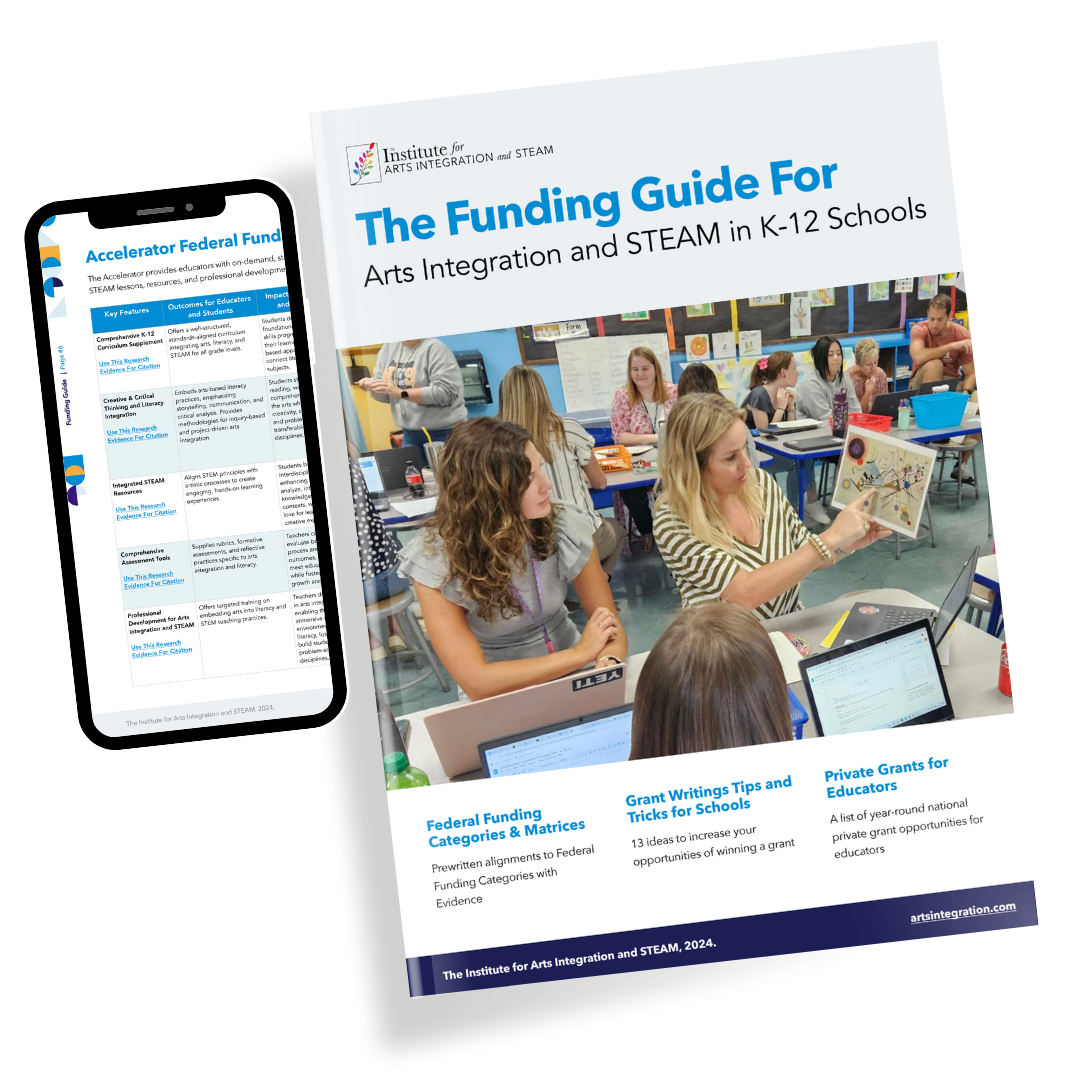Funding Types for Your School
This guide is designed to help educators and leaders identify and procure various sources available to fund arts integration initiatives, instructional materials, and professional development. This includes:
Federal Funding
A variety of federal funding opportunities are available to support your arts integration and STEAM initiatives, empowering you to create the enriching learning experiences your students deserve. This funding guide will show you which ones work best.
Specialized Funding
Did you know there is funding hidden inside many district, local, and state budgets? Many of these are meant to directly impact arts-focused PD, resources, and more. We’ll show you where to look.
Grant Funding
Local partnerships and private grants offer essential funding and support for your program’s success. Review the best grants available in the funding guide to get started!

Categories and Funding Alignment Matrices
It’s not enough just to find the funding – you also have to know how to get it approved. This resource connects The Institute’s programs with measurable educational outcomes, offering pre-written language to simplify Title funding applications and other grant requests. Here’s what’s inside:
- Categories for Title Funding Use
- Federal Funding Matrices with Key Elements, Research, and ESSA Alignments – just copy and paste in your next funding request.
- Recommendations for Additional Funding Sources Often Overlooked
- Curated Private Grant Opportunities to Explore (with deadlines) and
- Pro Tips for Securing Grants and Other Funding
Save Yourself Time and Get The Funds You Deserve.
The Institute for Arts Integration and STEAM is dedicated to helping districts discover tailored solutions that address their unique challenges and secure funding to benefit both educators and students. Start now with this free funding guide.
Questions? Contact Us Here Anytime.

